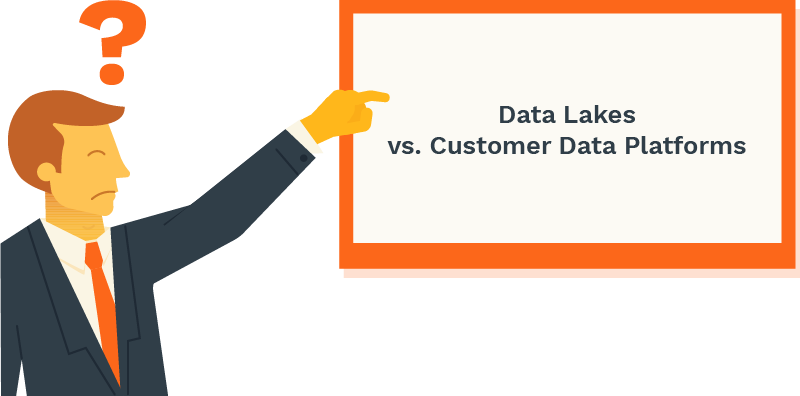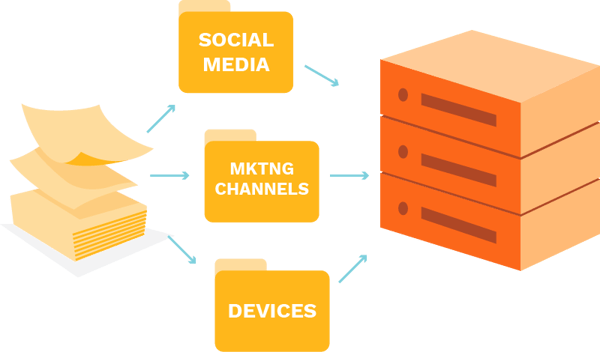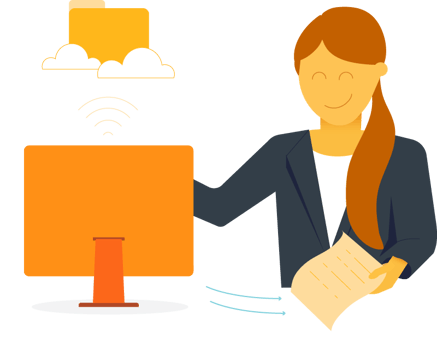Not long ago, enterprises depended on the actions of their clients to provide them with data that described their experience. However, the technological world is constantly changing, and customer experience data is now pulled from a multitude of locations, such as sensor data, social media, and the internet of things. While this overabundance of data is beneficial, it also creates a daunting task—managing this flood of data.

Enterprises must look to innovative infrastructure to help organize and interpret these new forms of data, especially as consumers demand an efficient experience that is free of frustration. Walker states that by 2020, the majority of business differentiation and brand competitiveness will stem from customer experience, surpassing the importance of the quality and the price of a product.
For your business to adequately distinguish itself from your competition, you must perfect your behind-the-scenes operations to ensure a quick and seamless experience for your customers. Coherence between daily business functions and data channels is a necessity to ensure this perfect consumer experience. When a unified customer experience is accomplished, your business can expect increased customer loyalty, a superb reputation, and an increase in revenue. Therefore, it’s imperative that your enterprise unifies not only your business operations but also your data. Two tools that can help foster this consolidation are Data Lakes and Customer Data Platforms, also known as CDPs.
Both Data Lakes and CDPs are IT implemented infrastructures responsible for storing consumer data. Data Lakes store raw, unprocessed data, whereas CDPs perform additional processing to make the data usable. Compare a fridge filled with food and a completed recipe. Both contain the necessary components for a meal, but the finished product is more accessible to those at the dinner table. A Data Lake is like a fridge filled with raw ingredients, and a CDP is the completed meal, ready to be consumed.
The Details of Data Lakes

Being that Data Lakes contain raw, unaltered data, they have the potential to hold abundant amounts of powerful information. The recent surge in Artificial Intelligence and Machine Learning has driven the industry to desire pure data that is intended to support analysis. For enterprises that receive data from locations such as social media, marketing channels, sensors, or devices, a Data Lake can help store data that is yet to be defined. It is not uncommon for Lake data to be initially entered without an identified purpose, and manipulated further down the line.
However, the information within Data Lakes exists in a technical vernacular that only trained professionals, such as IT-specialists, are able to understand. To convert this pure data into an approachable format that revenue and marketing teams can gain insight from, conversion processes are necessary. Thus, the IT department must produce requested data reports, which is both inefficient and labor intensive. According to a Forbes survey, 47% of marketing leaders claim that it takes over a week to analyze a campaign. This delay is likely due to the slow conversion process from data to report. The most convenient solution for IT and marketing teams to become more efficient is to implement a Customer Data Platform.
Benefits of CDPs
Unlike IT hosted Data Lakes, CDPs are managed by the marketing and revenue teams of your business. By uniting first and third-party data, CDPs establish customer databases with a real-time data flow. CDPs are developed with built-in models and components that allow non-IT specialists to access, analyze, and share data without disrupting the integrity of the platform. These prebuilt processes allow data to be available almost instantaneously, which is necessary to implement quick customer relations. The aforementioned Forbes survey showed that 53% of marketing leaders credit CDPs with improved team reactions to market changes or customer preferences. Additionally, the prepackaged model of CDPs allows for minimal maintenance, which increases employee productivity.

The accessibility of CDPs enables a larger range of individuals to read and interpret what was previously an IT-specific language. Since this platform would be managed by your enterprise's teams, the CDP will be built to fit the strategies of your business. For example, specialized programs within the CDP create a customized consumer database, enabling easy retrieval of consumer data, and allowing for a more efficient customer experience. CDPs provide revenue teams with the powers that previously belonged to IT specialists only.
Best of Both Worlds: Combining Data Lakes and CDPs
Instead of implementing either a Data Lake or CDP, your business may want to consider combining the power of both. These two methods of storing data can complement each other; Data Lakes help provide CDPs with most of their information, and CDPs help complete the data that is housed in a Data Lake.
When both CDPs and Data Lakes co-exist within an enterprise, raw data is easily translated into an accessible format that non-IT specialists, such as revenue teams, are able to understand. Thus, these teams can efficiently capitalize upon easily accessible data, ultimately driving business growth. Additionally, when CDPs provide approachable data, IT teams can focus their energy on their projects, instead of expending unnecessary energy translating Data Lake information for revenue teams. At the same time, IT teams can reap the benefits of collecting malleable, raw data.

Therefore, decisions are able to be made in real-time, enabling your enterprise to provide a harmonious experience to your customers, increasing the success of your business.
Categories: Data, Managed IT Services











